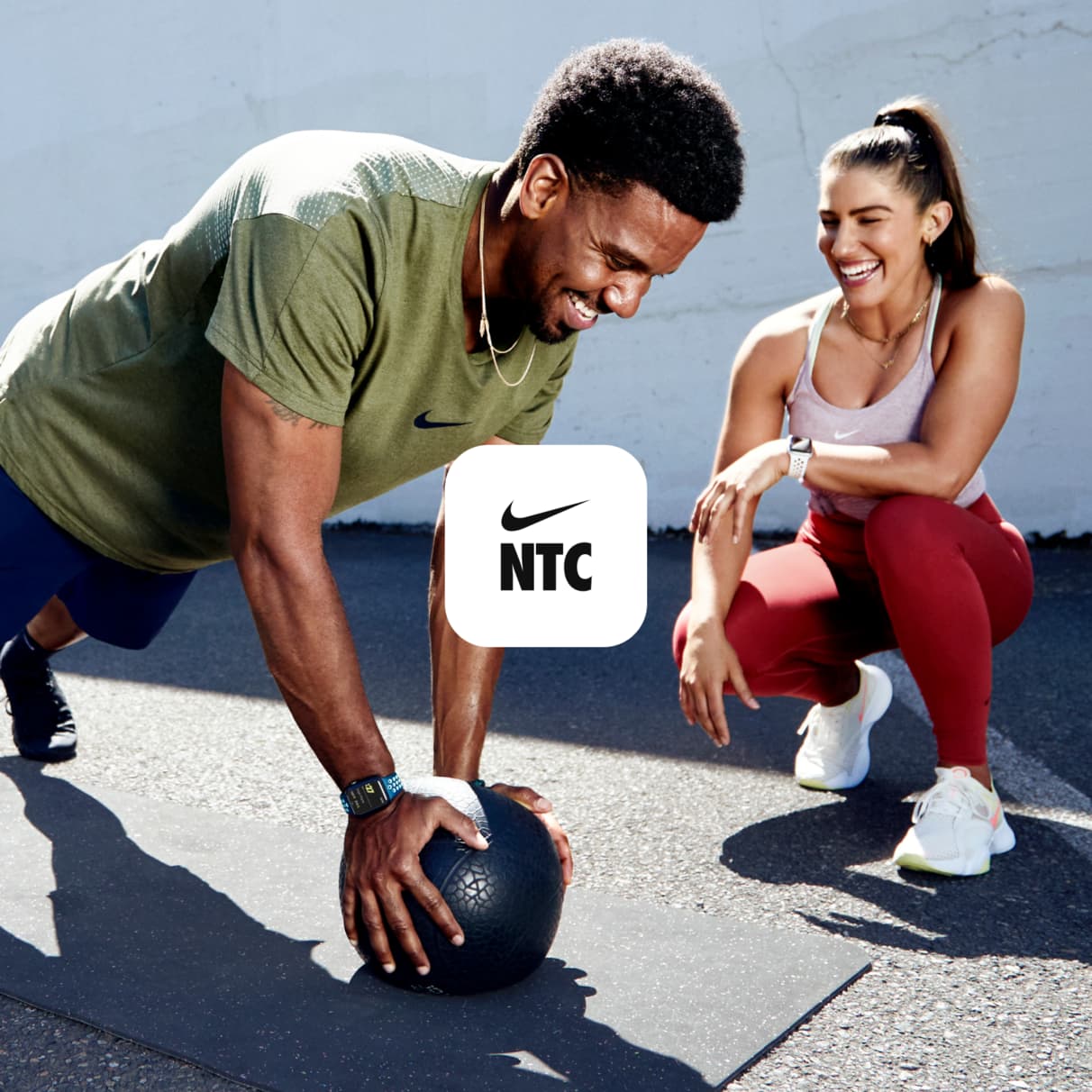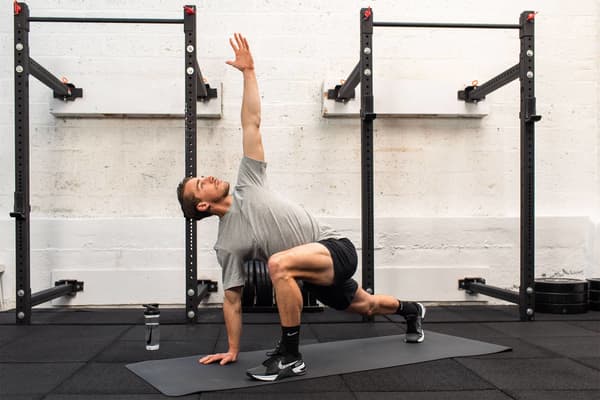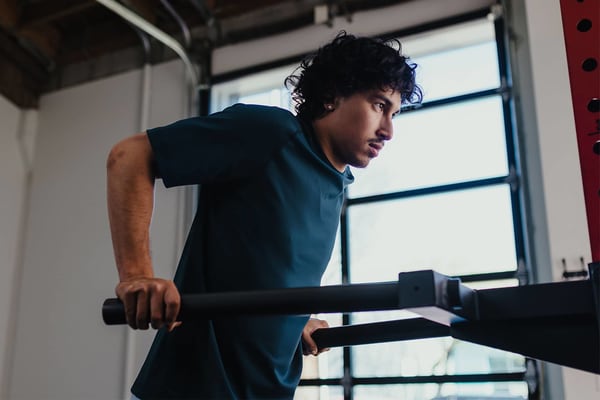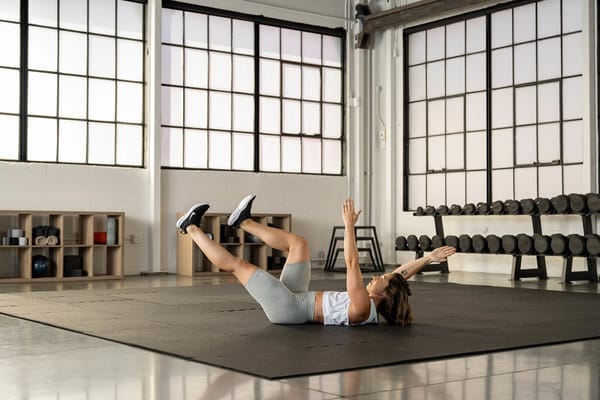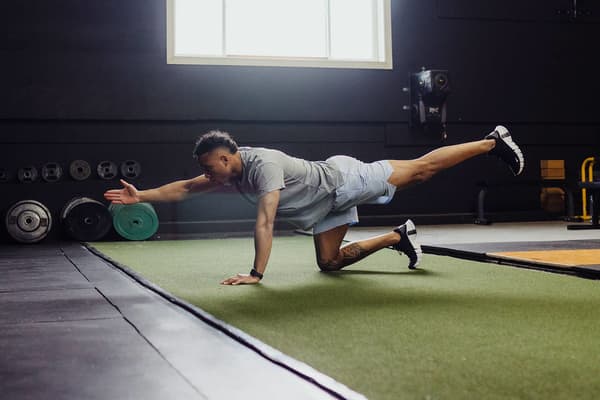What Muscles Do Push-ups Work?
Sport & Activity
Here's everything you need to know about what muscles are recruited as well as how to modify the move if you're a beginner.

When it comes to classic exercises that nearly everyone has done (or attempted) at some point in life, the push-up probably ranks near the top of the list, and that's for good reason.
The move can be done virtually anywhere—from a hotel room to your favourite hiking trail. And there's plenty of research that backs up the benefits of performing the move regularly. Not to mention, it can also serve as a measure of overall fitness and health.
For example, a 2019 study from the journal JAMA Network Open on male firefighters found that those who could complete at least 40 push-ups over 30 seconds had significantly lower risk of cardiovascular problems (over the study's decade-long time frame) compared to those who could do 10 or fewer push-ups.
Here's how to get started on the path to doing better push-ups, beginning with the muscles that will get you there.
What muscles do push-ups work?
Do push-ups work your biceps? Absolutely, but that's only one muscle group that sees the advantages, according to strength and conditioning trainer Reda Elmardi, CSCS., of The Gym Goat, who said these are three muscles you work most:
· Triceps brachii: located at the back of your upper arm, the muscle group is responsible for extending your elbow joint and bending your wrist.
· Biceps brachii: along the front side of your upper arm, this is one of the key muscles of the arm and is responsible for flexing your elbow joint and lifting your forearm towards your head.
· Pectoralis major: this muscle group is located in your chest area and helps extend your shoulder joint and bend your elbow joint.
That doesn't mean these are the only muscles engaged, just that they're doing the majority of the work. According to Garret Seacat, CSCS., founder of Absolute Endurance, you'll also be firing up your core muscles to keep you in that straight line as you lower and lift, as well as your deltoid muscles, which are the "cap" on the top of your shoulder. To some degree, your quadriceps—the large muscles on the front of the thighs—will also be involved for stability.
Expert-backed Tips for Perfecting Your Form
Like other types of exercises, push-ups require good form if you want to reap the benefits and see better muscle involvement. These are the basic form tips, according to Seacat:
- Start in a plank position with hands slightly wider than shoulder-width apart and fingers outstretched for better support.
- Elbows should be tucked towards the body.
- Inhale at the top of the push-up, exhale as you lower, inhale at the bottom of the push-up and exhale as you push back up.
With proper, steady form, a push-up should take about three seconds to complete, Seacat said. Most of all, take your time and keep the alignment of your back at the top of mind. He said that the most common mistake people make with form is letting the lower back sag on the descent, which is usually due to fatigue. If that's happening, focus on completing fewer reps more often to build up endurance. In addition, try including more core exercises into your workout routine since a strong core can keep your back from sagging throughout the move.
(Related: The Top Bodyweight Chest Workout, According to Trainers)
Once you have proper form and can perform at least 10 standard push-ups, you can start to play around with modifications that increase the intensity. For instance, a study in a 2016 issue of the Journal of Physical Therapy Science found that when your hands are closer together, the muscles in your chest get a better workout. And when hands are placed more outwards (Think: right underneath the shoulders or even further out), your triceps work harder.
You can also adjust variables like push-up speed—try doing the slowest possible push-up and engage your core throughout the move, for example—and the number of reps. You can also add an endurance element by doing plank jacks in between push-ups, which means popping your feet out to the sides and back in when you're at the top of the push-up. Or play with balance and recruit more muscles within your core by lifting one foot a few inches off the ground throughout the move.
Starting Point for Beginners
If you haven't been doing push-ups regularly—or you're only just prepping to do your first one—it may be helpful to start with a modified version to get used to the motion.
The most common way to modify it is with your knees down, and Elmardi said this simply means dropping your knees to the ground and keeping them there throughout the motion of lowering and rising back up. However, it tends to be easier to let the lower back sag when your knees are down, so the key is to focus on keeping your back straight and slow down to maintain proper form.
Another way you can perform a supported push-up is by putting your arms on a box or bench and doing the exercise at an increased height. That way, you still get the motion of the push-up but take out some of the more intense resistance that comes with doing a push-up off the floor.
Whether you modify or not, remember that consistency is key, especially if you're just beginning, Seacat said. One survey found that the majority of respondents could do fewer than five push-ups in a row, so if you struggle to get into double digits, you're not alone. But like other types of exercises, gradual progression can be the ticket to getting your count higher—and building all those muscles along the way.
Words by Elizabeth Millard
